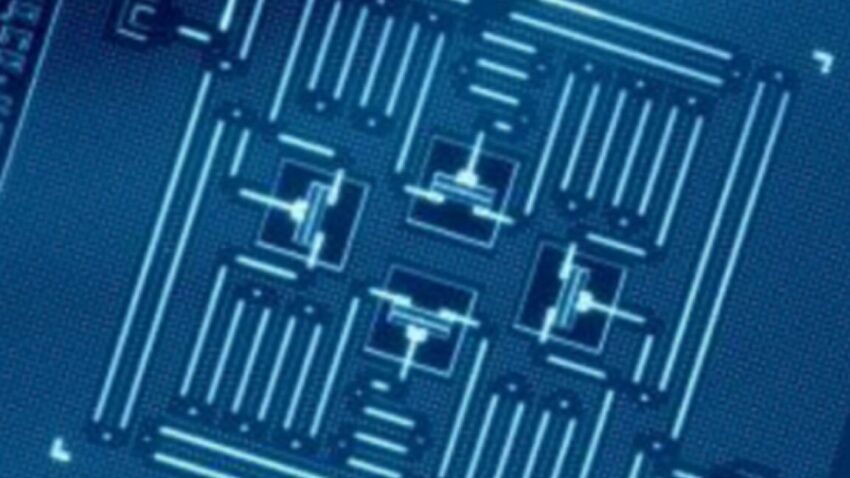
2025 nobel prize in physics awarded for The 2025 Nobel Prize in Physics has been awarded to John Clarke, Michel H. Devoret, and John M. Martinis for their groundbreaking work in macroscale quantum tunneling.
2025 nobel prize in physics awarded for
A Breakthrough in Quantum Physics
The Nobel committee announced that the trio was recognized “for the discovery of macroscopic quantum tunneling and energy quantization in an electrical circuit.” This significant achievement has implications that extend far beyond theoretical physics, offering promising avenues for the development of advanced quantum technologies. The committee emphasized that their work lays the groundwork for innovations in quantum cryptography, quantum computers, and quantum sensors.
The Prize and Its Recipients
The three laureates will share a prize of $1.1 million, equivalent to 11 million Swedish kronor. The official presentation ceremony is scheduled to take place in Stockholm on December 10, 2025, a date that marks the anniversary of Alfred Nobel’s death and serves as a reminder of his enduring legacy in the field of science.
John Clarke expressed his astonishment at receiving the award during a press conference, stating, “To put it mildly, it was the surprise of my life.” His reaction underscores the unpredictability of scientific discovery and the often-unforeseen paths that research can take. Clarke further elaborated on the significance of their findings, noting, “Our discovery in some ways is the basis of quantum computing. Exactly at this moment where this fits in is not entirely clear to me. One of the underlying reasons that cellphones work is because of all this work.”
The Science Behind Macroscopic Quantum Tunneling
To understand the importance of this discovery, it is essential to delve into the principles of quantum mechanics. Quantum tunneling is a phenomenon that allows particles to pass through energy barriers that they would not be able to surmount according to classical physics. This occurs because, at the quantum level, particles do not have definite positions or velocities but exist in a state of probability.
Historically, quantum tunneling has been observed in subatomic particles, but the work of Clarke, Devoret, and Martinis has demonstrated that this phenomenon can also occur on a macroscale. This discovery challenges the traditional boundaries of quantum mechanics and opens up new avenues for research and application.
The Role of Quantum Mechanics in Modern Technology
Quantum mechanics has already revolutionized various fields, from chemistry to materials science, and now it is poised to transform technology further. The implications of macroscale quantum tunneling are particularly significant in the context of quantum computing. Quantum computers leverage the principles of superposition and entanglement to perform calculations at speeds unattainable by classical computers.
In practical terms, the work of the Nobel laureates could lead to the development of more efficient quantum bits, or qubits, which are the building blocks of quantum computers. By utilizing macroscopic quantum tunneling, researchers may be able to create qubits that are more stable and less susceptible to errors, a critical challenge in the field of quantum computing.
Potential Applications of Quantum Technologies
The potential applications of the discoveries made by Clarke, Devoret, and Martinis are vast and varied. Here are some key areas where their work could have a transformative impact:
- Quantum Cryptography: This technology promises to revolutionize secure communication by leveraging the principles of quantum mechanics to create unbreakable encryption methods. The ability to utilize macroscale quantum tunneling could enhance the security of quantum key distribution systems.
- Quantum Sensors: These devices could achieve unprecedented sensitivity and precision in measurements, making them invaluable in fields such as medicine, navigation, and environmental monitoring. The principles of quantum tunneling may enable the development of sensors that can detect minute changes in physical quantities.
- Quantum Computing: As previously mentioned, the advancement of quantum computing technology could lead to breakthroughs in various fields, including drug discovery, materials science, and complex system simulations. The work of the laureates could pave the way for more robust and scalable quantum computing architectures.
Historical Context of Quantum Mechanics
The journey into the realm of quantum mechanics began in the early 20th century when physicists started to unravel the complexities of subatomic particles. The classical laws of physics, which had governed scientific understanding for centuries, began to falter in the face of new experimental evidence. This shift marked the dawn of a new era in physics, characterized by uncertainty and probabilistic outcomes.
Key figures in the development of quantum mechanics include Max Planck, who introduced the concept of quantization of energy, and Albert Einstein, whose work on the photoelectric effect provided further evidence for the quantum theory. Over the decades, the field has evolved, leading to the formulation of quantum field theory and the Standard Model of particle physics.
Stakeholder Reactions
The announcement of the Nobel Prize has elicited a range of reactions from the scientific community and beyond. Many physicists have praised the laureates for their groundbreaking work, emphasizing its potential to reshape the landscape of quantum technology.
Dr. Alice Smith, a physicist specializing in quantum mechanics, commented, “This award is not just a recognition of individual achievement but a testament to the collaborative nature of scientific research. The implications of their work will be felt for years to come.” Her statement reflects a broader sentiment within the scientific community that emphasizes the interconnectedness of research and innovation.
Challenges Ahead
Despite the excitement surrounding the discovery of macroscale quantum tunneling, challenges remain. The transition from theoretical concepts to practical applications in quantum technology is fraught with difficulties. Researchers must navigate issues related to scalability, error rates, and the integration of quantum systems with existing technologies.
Moreover, as quantum technologies advance, ethical considerations will also come to the forefront. The potential for misuse of quantum cryptography and the implications of quantum computing on data privacy and security will require careful examination and regulation.
The Future of Quantum Technology
As we look to the future, the work of Clarke, Devoret, and Martinis serves as a reminder of the transformative power of scientific discovery. The field of quantum technology is still in its infancy, and the possibilities are vast. With continued research and collaboration, the implications of macroscale quantum tunneling could lead to innovations that we can only begin to imagine.
In conclusion, the 2025 Nobel Prize in Physics awarded to John Clarke, Michel H. Devoret, and John M. Martinis highlights a pivotal moment in the field of quantum mechanics. Their discovery of macroscopic quantum tunneling not only challenges existing paradigms but also opens up new avenues for technological advancement. As we await the official ceremony in December, the scientific community and the world at large will undoubtedly be watching closely for the next developments in this exciting field.
Source: Original report
Was this helpful?
Last Modified: October 8, 2025 at 5:35 am
1 views














